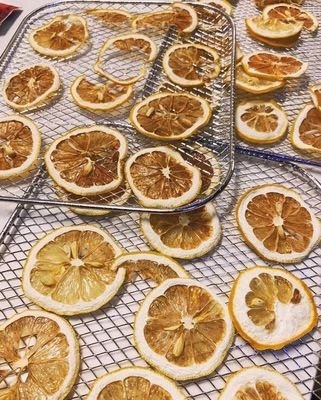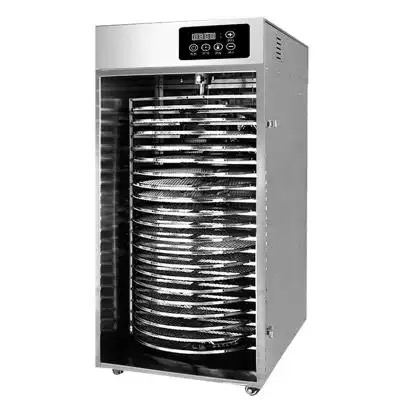
Content Menu
● Introduction
● What is a Heat Pump Dryer?
● Advantages of Using Heat Pump Dryers for Food Dehydration
>> Energy Efficiency and Cost Savings
>> Gentle Drying Process
>> Versatility
● How Heat Pump Dryers Work
>> Air Intake
>> Heating
>> Drying Cycle
>> Condensation
>> Recycling
● Applications of Heat Pump Dryers in Food Processing
>> Commercial Food Production
>> Small-Scale Food Businesses
>> Case Studies
● Maintenance and Care for Heat Pump Dryers
>> Cleaning Filters
>> Moisture Drawers
>> Troubleshooting
● Conclusion
● Frequently Asked Questions
>> 1. What are the main benefits of using a heat pump dryer for food?
>> 2. How does a heat pump dryer differ from a conventional dryer?
>> 3. What types of food can be dried using heat pump dryers?
>> 4. Are heat pump dryers easy to maintain?
>> 5. Can heat pump dryers be used in small spaces?
Introduction
Food dehydration is a crucial process in food preservation, extending shelf life while maintaining nutritional value and flavor. As the demand for efficient and effective food drying methods grows, heat pump dryers have emerged as a leading technology in the food industry. These dryers not only enhance the quality of dried products but also offer significant energy savings compared to traditional drying methods.

What is a Heat Pump Dryer?
A heat pump dryer is an advanced drying system that utilizes heat pump technology to remove moisture from food products. Unlike conventional dryers that expel hot air and moisture outside, heat pump dryers recycle the air within the system. This process involves drawing in ambient air, heating it, and circulating it through the food items. The moisture is then condensed and collected, allowing for continuous drying without the need for external venting.
Advantages of Using Heat Pump Dryers for Food Dehydration
Heat pump dryers offer numerous advantages for food dehydration:
Energy Efficiency and Cost Savings
These dryers consume significantly less energy than traditional methods, leading to lower operational costs. The ability to recycle air means that less energy is required to maintain optimal drying temperatures.
Gentle Drying Process
The controlled temperature and humidity levels in heat pump dryers ensure that food retains its color, flavor, and nutritional content. This gentle drying process is particularly beneficial for delicate items like fruits and herbs.
Versatility
Heat pump dryers can handle a wide range of food products, from fruits and vegetables to meats and pet treats. This versatility makes them an excellent choice for both commercial and small-scale food processors.

How Heat Pump Dryers Work
The operation of a heat pump dryer involves several key components:
Air Intake
Ambient air is drawn into the system.
Heating
The air is heated using a heat pump, which transfers heat from the environment.
Drying Cycle
The hot air circulates through the food, absorbing moisture.
Condensation
Moist air is passed through a condenser, where moisture is removed and collected in a moisture drawer or hose.
Recycling
The cooled, dry air is then reheated and recirculated, continuing the drying process.
Applications of Heat Pump Dryers in Food Processing
Heat pump dryers are increasingly being adopted in various food processing applications:
Commercial Food Production
Large-scale food manufacturers utilize heat pump dryers to efficiently process fruits, vegetables, and meats, ensuring consistent quality and reduced energy costs.
Small-Scale Food Businesses
Small producers benefit from the compact design and energy efficiency of heat pump dryers, allowing them to produce high-quality dried products without significant upfront investment.
Case Studies
Numerous businesses have successfully integrated heat pump dryers into their operations, resulting in improved product quality and reduced energy consumption.
Maintenance and Care for Heat Pump Dryers
To ensure the longevity and efficiency of heat pump dryers, regular maintenance is essential:
Cleaning Filters
Regularly clean or replace air filters to maintain airflow and efficiency.
Moisture Drawers
Empty and clean moisture drawers frequently to prevent buildup and ensure optimal performance.
Troubleshooting
Familiarize yourself with common issues, such as temperature fluctuations or condensation problems, and address them promptly.
Conclusion
Heat pump dryers represent a significant advancement in food dehydration technology. Their energy efficiency, gentle drying capabilities, and versatility make them an ideal choice for both commercial and small-scale food processing. As the food industry continues to evolve, the adoption of heat pump dryers is likely to increase, paving the way for more sustainable and efficient food preservation methods.

Frequently Asked Questions
1. What are the main benefits of using a heat pump dryer for food?
Heat pump dryers are energy-efficient, preserve food quality, and can handle various food types effectively.
2. How does a heat pump dryer differ from a conventional dryer?
Unlike conventional dryers, heat pump dryers recycle air and moisture, making them more energy-efficient and suitable for delicate food items.
3. What types of food can be dried using heat pump dryers?
Heat pump dryers can effectively dry fruits, vegetables, meats, herbs, and even pet treats.
4. Are heat pump dryers easy to maintain?
Yes, they require regular cleaning of filters and moisture drawers, but overall maintenance is straightforward.
5. Can heat pump dryers be used in small spaces?
Yes, heat pump dryers do not require external venting, making them ideal for small kitchens or food processing areas.












